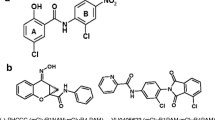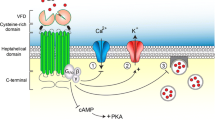Summary.
The spectrum of action of flupirtine includes analgesia, muscle relaxation and neuroprotection. N-methyl-D-aspartate (NMDA) receptor antagonism has been discussed as a possible mechanism of action of this compound with little direct evidence. The objective of the present study was to develop a plausible model to explain flupirtine's spectrum of action. A four-stage strategy was selected for this purpose: Firstly, the serum concentration of flupirtine under therapeutic conditions was determined on the basis of the current literature. The second stage involved assessing the known in-vitro effects in light of the therapeutic active concentration. Using whole cell patch clamp recordings from cultured rat superior colliculus neurones interactions between flupirtine and NMDA receptors were assessed. Only very high concentrations of flupirtine antagonized inward currents to NMDA (200 μM) at −70 mV with an lC50 against steady-state responses of 182.1 ± 12.1 μM. The effects of flupirtine were voltage-independent and not associated with receptor desensitization making actions within the NMDA receptor channel or at the glycine modulatory site unlikely. NMDA receptor antagonism probably has little relevance for the clinical efficacy of flupirtine as the concentrations needed were far higher than those achieved in clinical practice. However, the activation of a G-protein-regulated inwardly rectifying K+ channel was identified as an interesting molecular target site of flupirtine. In the next stage, the central nervous spectrum of action of experimental K+ channel openers (PCO) was considered. As far as they have been studied, experimental K+ channel openers display a spectrum of action comparable to that of flupirtine. In the final stage, a global model was developed in which flupirtine stabilizes the resting membrane potential by activating inwardly rectifying K+ channels, thus indirectly inhibiting the activation of NMDA receptors. The model presented here reconciles the known functional NMDA receptor antagonism of flupirtine with the activation of K+ channels that occurs at therapeutic concentrations, thus providing an understanding of flupirtine's spectrum of action. This makes flupirtine the prototype of a clinically applicable substance group with analgesic, muscle-relaxant and neuroprotective properties.
Similar content being viewed by others
Author information
Authors and Affiliations
Additional information
Received June 16, 1999; accepted July 1, 1999
Rights and permissions
About this article
Cite this article
Kornhuber, J., Bleich, S., Wiltfang, J. et al. Flupirtine shows functional NMDA receptor antagonism by enhancing Mg2+ block via activation of voltage independent potassium channels. J Neural Transm 106, 857–867 (1999). https://doi.org/10.1007/s007020050206
Issue Date:
DOI: https://doi.org/10.1007/s007020050206




